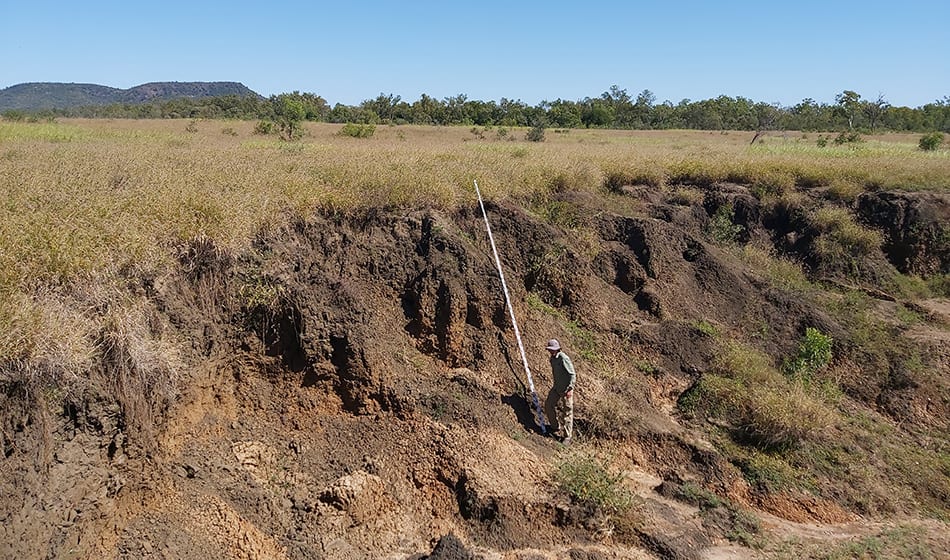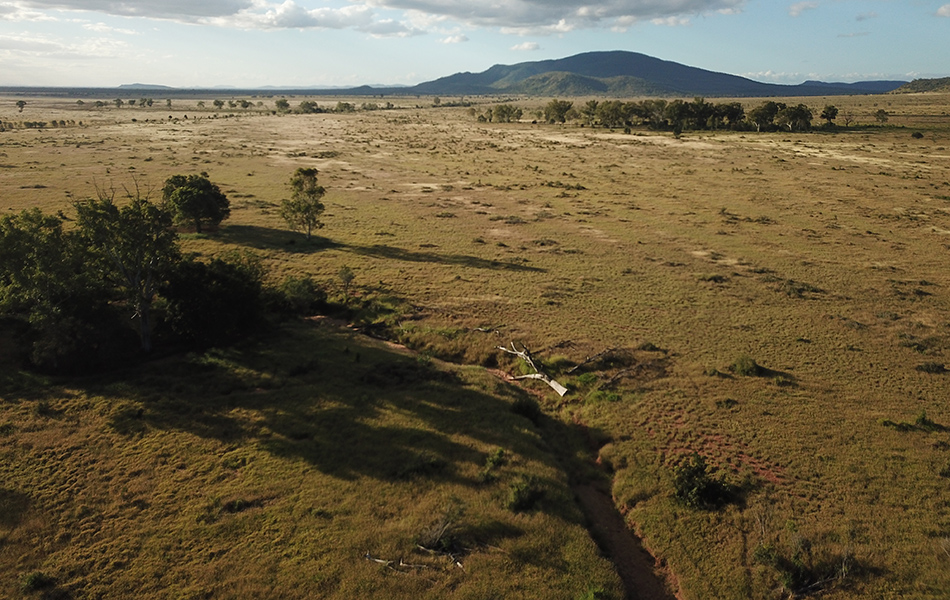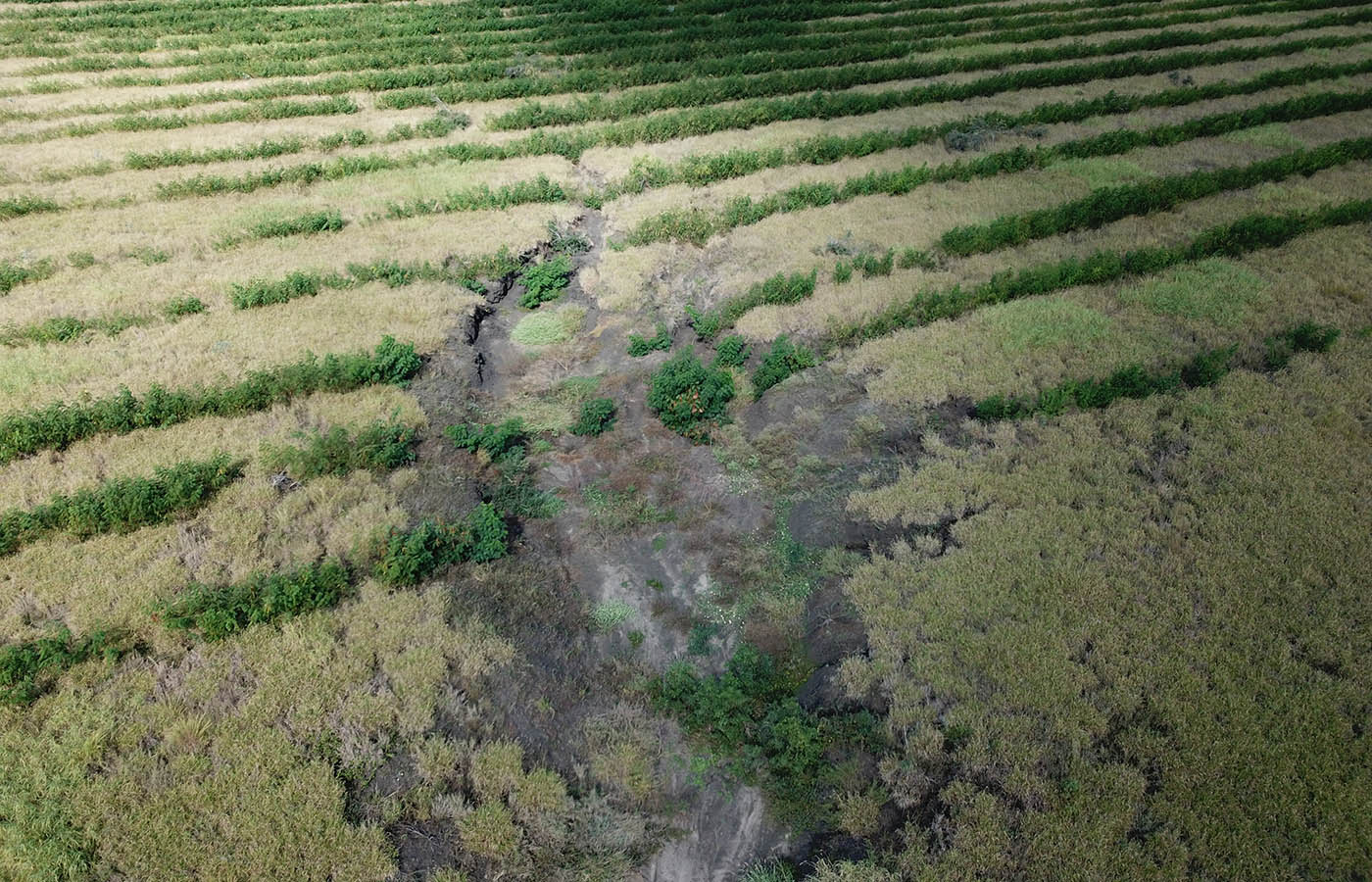
Weetalaba Station — LDC’s third landscape rehydration site
The Mulloon Institute is designing a cost-effective way to address an erosion hotspot on Weetalaba Station to help hold and keep water on the property.

Reid and Julie Muirhead, of Weetalaba Station, have made a strategic decision to focus on landscape function on the property.
Landscape rehydration techniques are expected to improve productivity by slowing water movement across the landscape, and to promote infiltration rates to enhance pasture growth.
Slowing water movement reduces erosion, increases pasture yields and will generate economic and environmental rewards.
The erosion site that is being treated is an active alluvial fan that has incised and cut a shortened path to nearby Rosella Creek.
Large active black soil gullies from overland water flows are now dropping into the feature. The erosion is also threatening a nearby leucaena crop.
Mulloon Consulting, a subsidiary of The Mulloon Institute, has designed the project. Interventions will use natural materials to lift and spread water higher in the landscape and re-establish an older flow pattern where water used to run parallel to Rosella Creek for about six kilometres before re-entering the creek system.
The interventions will spread water across the landscape, increase inundation and infiltration across the plain, increase deposition of sediments, and slow subsurface moisture movements.
A grazing management plan will be implemented to combat erosion and to improve landscape function, specifically ground cover.
The long term benefits of the works will include increased water infiltration, healthier soils, more diverse pastures, increased grazing capacity, reduced erosion, and improved water quality.
Large gully on Weetalaba Station where the overland flow re-enters incised fan.
On top of fan feature looking in the direction of the old flow path.
Gully cutting up through a leucaena crop.



